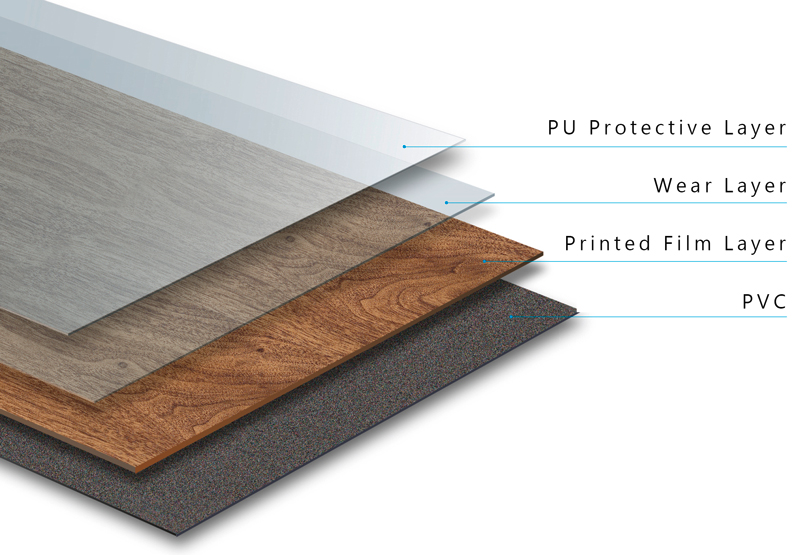Introduction to PVC Tile
Vinyl Tile/Plank-- Pressing machine pressing molding can be formed on the surface in a special embossed tiles,also can registered embossed tiles make for a more more vivid lines. Surface tiles can also be specially treated of extend the useful life,and we are committed to developing new products such as 3D tiles , Elasticity tiles, Weave tiles, Maglev tiles, Stop slide tiles, and Composites tiles .... etc, meet different market needs.
Our Products:
- V.C. Tile:Through the National Green Building Material and comply with environmental concept.
- Health Tile:Add far infrared and nano antibacterial ingredient of positive effect on the human body.
- PVC Accessories:including PVC Wall Base, PVC Step Nosing, PVC Edge Covering, and Welding Rod .... etc.
PVC Tile Construction:
PVC flooring (also known as vinyl strips and tiles) is actually constructed of three layers: the backing, the printed film layer and the top layer.

THE BACKING
The backing forms the important base of any PVC floor, because it is this which defines the technical quality of the floor. The backing may be made of pure PVC (the most expensive but best composition, because it is dimensionally stable and reliable), but may also include additional recycled material from untraceable sources. That means lower costs but also less reliability. Often a fibre-glass layer is added to give the product a little more stability. A strong odour often gives away the fact that the product incorporates impure recycled ingredients. mFLOR only uses pure PVC.
THE FILM LAYER
The middle film layer is responsible for the appearance of the floor. Because its absorbency is low, printing on PVC film is particularly sharp and vibrant. This is not the case where the printing is on paper (as in the case of laminates), or on to a PVC gel-coat as in the case of PVC floors produced by continuous technology (see below). This deeper and more natural look is one of the reasons for the increasing popularity of PVC flooring.
THE TOP LAYER
The top layer serves to protect the product from wear and tear caused by use of the floor. Protective layers are available in a variety of compositions and thicknesses; 0.2 mm is commonly used for domestic applicationsand 0.55, 0.7, 1.0 mm for project-based use.
In addition, the top layer can also be provided with an extra protective layer of polyurethane (PU). In particular this provides protection during transport. All mFLOR floors feature a protective layer of matt polyurethane as standard.

